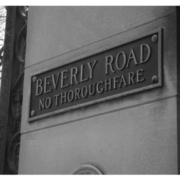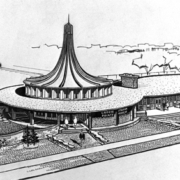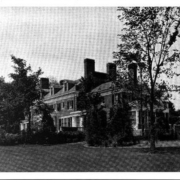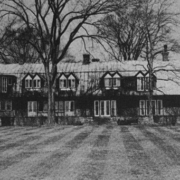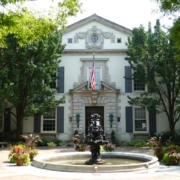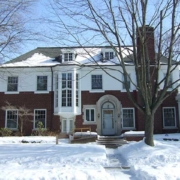Historical Architecture of Grosse Pointe – 44 Beverly Road
Last week we presented some of the work of Richard E. Raseman who was, at one point, one of Detroit’s most prominent and influential designers. Not only did he create many significant buildings in the city, but also several noteworthy residences in Grosse Pointe.
This week we delve deeper into one of Richard Raseman’s residential projects, 44 Beverly Road, completed in 1916-1917 for William Cornelius Crowley. It is believed this outstanding home was Raseman’s first residential project in Grosse Pointe. The property was featured in the Western Architect in October 1916.

44 Beverly Road is located on the corner of Maumee and Beverly Road and has always been a prominent residence in Grosse Pointe Farms. Beverly Road is part of the original Beverly Park sub-division that was platted by Henry B. Joy in 1910. The district was one of the earliest upper-class subdivisions in the Grosse Pointes and played a part in the area becoming an upscale community for wealthy Detroiters. All the residences, aside from 35 Beverly (built in 1976), were constructed between 1912 and the 1930’s. The architectural styles on display include Georgian Revival, Mission Revival, Colonial Revival, English Cottage style, and Spanish Revival. The homes were designed by some of Metro Detroit’s most distinguished architects of that era including Robert O. Derrick, Marcus Burrowes, Richard E. Raseman, Alpheus W. Chittenden, and Raymond Carey. Some of the original residents of Beverly Road were prominent corporate executives and lawyers such as William P. Hamilton, Edwin R. Stroh, Sidney T. Miller, William Van Dyke, Edwin B. Henry, and William Cornelius Crowley.

The architectural style of 44 Beverly is Spanish Revival. It is believed inspiration for this style was derived from the adobe and Spanish Colonial buildings of southern California, medieval Spanish churches, and the Baroque architecture of Spain and Portugal. The style grew in popularity thanks in part to the Spanish Colonial buildings at the 1915 San Diego Exposition. It would become popular in Southern California, New Mexico, southern Arizona, Texas, and Florida. Some of the typical traits of Spanish Revival architecture are a low-pitched red tile roof, stucco surfaced walls, arched windows, large, exposed chimneys, carved, weathered wooden door, a walled courtyard, and arcaded porches.
Both the 7,106 sq ft house and the two-car garage at 44 Beverly have a red tiled roof with projecting side pavilions. The exterior is limestone with cut stone foundations. In keeping with the Spanish architectural style, the tall first floor windows are arched and set within a decorative stone frame. The windows on the upper level are smaller and rectangular in shape. A molded belt course separates the first and second stories. The property is surrounded by a wrought iron fence and gate, with stone block piers all of which still exist today. As with many Raseman projects Indiana limestone is used heavily on the exterior. Indiana limestone was a popular material in Grosse Pointe from the turn of the century through to the 1930’s, it was primarily used on homes, schools, and churches. Indiana limestone has been called “the best quarried limestone in the United States.” Source Wikipedia. First image is courtesy of: Katie Doelle. Second image is courtesy of Google Earth. The thirdphoto is courtesy of © Indiana Limestone Company. Courtesy, Indiana Geological and Water Survey, Indiana University, Bloomington, Indiana.
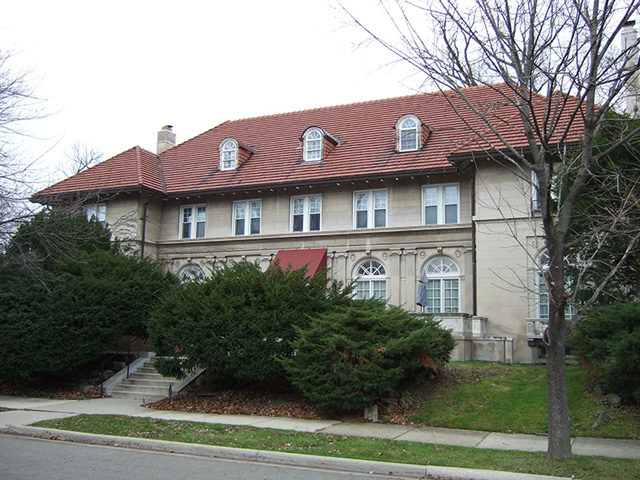
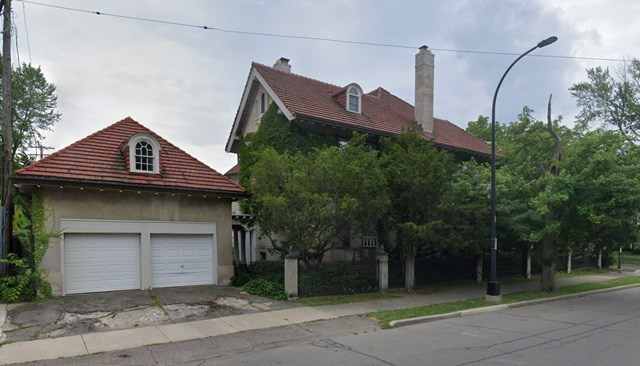
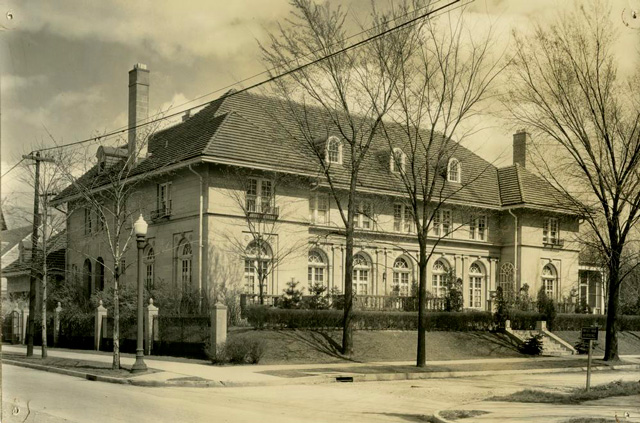
Over the years the house has had several prominent owners. It was commissioned by William C. Crowley, a member of the prominent Crowley family. Born on February 13, 1866, Mr. Crowley began his career in the wholesale dry goods business in Detroit around 1882. In 1909, together with his brothers Joseph, Daniel, and William Milner they founded the Crowley-Milner Company, generally referred to as Crowley’s – a high-end department store chain. Its flagship store, corporate office, and warehouse complex occupied two blocks in downtown Detroit for almost 80 years. The store was a direct competitor of the J. L. Hudson Company. Source: Wikipedia.
Mr. Crowley passed on February 19, 1927. Edward Vernon Rickenbaker – the World War 1 ‘Ace of Aces’, then purchased the house, and lived there with his family for around one year. Mr. Rickenbaker was “an American fighter pilot in World War I and a Medal of Honor recipient. With 26 aerial victories, he was the most successful and most decorated United States flying ace of the war”. Source: Wikipedia. In 1931, Eddie Rickenbaker, his wife Adelaide, and their two adopted sons moved to Bronxville, New York. 44 Beverly was then purchased by Mr. and Mrs. John Dryden, director and president of the Borg-Warner Company. The couple owned the property from 1929 – 1937.
Beverly Road is the only road in the Grosse Pointe communities that is listed on the National Register of Historic Places. 44 Beverly plays an important role in making this street so significant.
* Photos courtesy of the Higbie Maxon Agney archives unless stated.
** Research, information, and data sources are deemed reliable, but accuracy cannot be fully guaranteed.
Written by Katie Doelle
Copyright © 2024 Katie Doelle


